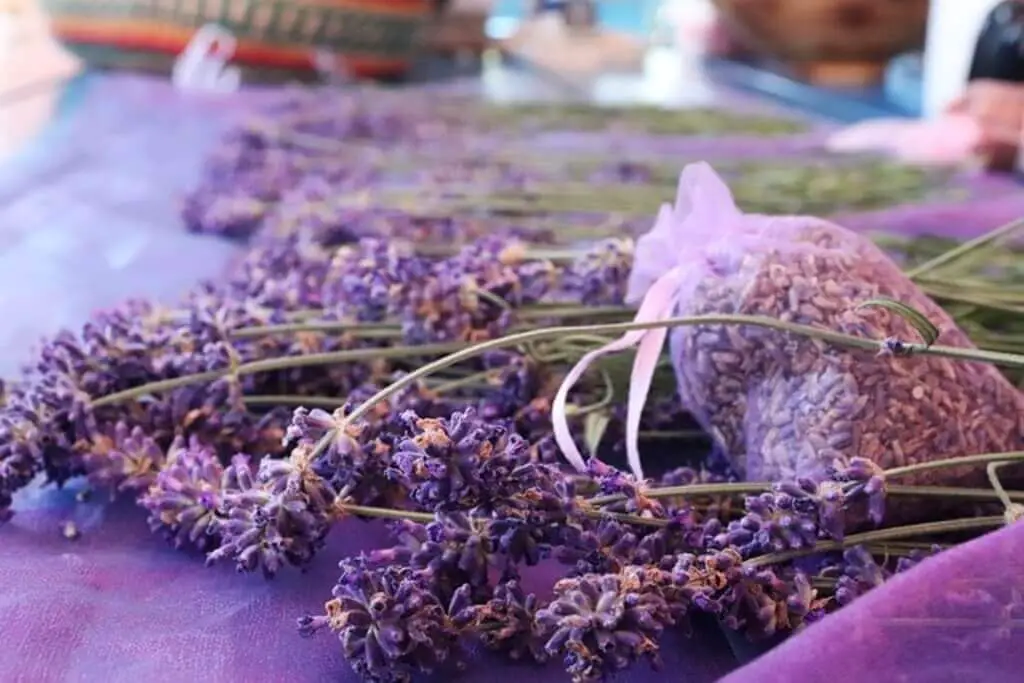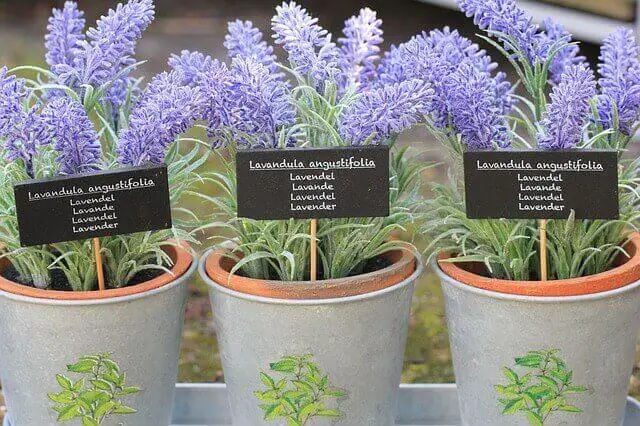50 Fun Facts About Lavender (with Photo’s & Information)
Lavender is a plant that has been used for medicinal purposes since ancient times. It can be found in gardens, on the side of the road, and it’s even grown as an ornamental plant.
Lavender plants are so popular because they smell amazing! But did you know there are many other reasons to love lavender? In this article we will explore 50 fun facts about lavender with photos, and information!
Table of Contents
Overview
- Order: Lamiales
- Family: Lamiaceae
- Genus: Lavandula
- Species: Lavandula Spica
- Scientific Name: Lavandula Officinalis
- Plant Type: Herbaceous perennial
- Flower Color: Small purple flowers.
- Propagation: Stems, seeds or cuttings.
- Height: 12 – 36″ inches.
- Width: 24 – 48″ inches.
- Zones: 5 and 8.
- Blooming Period: June to August
Plant Description
Lavenders are perennials that can be found mainly in Europe, but also grows wild across North America. There are approximately 45 species in the genus Lavandula. Lavender plants grow to between one and three feet tall, depending on the variety.
Lavender is a flowering plant, that belongs to the mint family “Lamiaceae”. Lavander has green or grayish green waxy leaves and spikes of purple or blue flowers, with pointed petals, which are pleasingly fragrant when in bloom.

Fun Facts About Lavender
- Lavender has an aroma that can be described as a combination of honey, balsam fir, and thyme.
- Lavender flowers are used in perfumes due to their sweet scent.
- Lavender is a perennial flowering plant. A perennial is a plant that will flower and grow year after year.
- 4 teaspoons of Lavender buds can be used to brew up an excellent cup of herbal tea.
- The first popular use of lavender as a formula as an ingredient in deodorant was popularized during the late 1800’s and early 1900’s.
- Lavender was once used as currency in France during medieval times.
- Lavender is used to make lavender essential oil, cooking oil, and flavoring.
- The fragrance of lavender is said to have a calming effect that helps to relax the mind, body, and spirit.
- Ancient Romans thought it had healing properties, used it to dress wounds, burned it as incense in their temples, and considered planting lavender around their homes a good luck charm.
- Lavender is used in cosmetics, cleaning products, incense, perfumes, lotions, shaving cream, shampoos, soap, sachets, toiletries.
- The ancient Greeks used lavender to decorate their temples and statues.
- Lavender is one of the most versatile plants with many uses including culinary, medical and ornamental purposes.
- Lavender has been used for centuries as a treatment for skin conditions such as acne and dermatitis because of its anti-inflammatory properties that work by blocking histamine release from mast cells in the skin.
- The ancient Egyptians used lavender for it’s calming effects on the mind.
- In the Middle Ages, people believed witches used lavender to make spells because of its association with death and evil spirits.
- Lavender is the second most popular herb in the world (behind basil).
- The color of purple comes from the plant (thanks to its chemical compound called anthocyanin).
- The flowers are most commonly blue or purple in color but can also be white, pink, yellow or red.
- Lavender is native to many areas in the Mediterranean region including France, Italy, Spain and Greece.
- The word “lavendula” comes from two Latin words meaning “to wash”.
- Lavender’s smell comes from the terpene molecules which give it its unique fragrance.
- When cutting flowers from a garden for a vase, always cut some stems that are just beginning to flower, as well as some that are more mature. That way they will last longer.
- If you rub fresh lavender leaves on your insect bites, stings and itchy rashes, you will reduce itching and inflammation almost immediately.
- When you breathe in the scent of lavender, it has a calming effect on the autonomic nervous system and reduces cortisol and blood pressure.
- Lavender oil is the only essential oil that still contains its own antioxidants, and over time it becomes more potent.
- In Ancient Greece, lavender was used to heal skin infections.
- The Romans would often bathe with it.
- Lavender has more than 45 species and over 450 different varieties.
- Lavender is part of the mint family.
- Egyptians considered lavender to be sacred because of its fragrance and medicinal properties.
- In the late 1800s, women were encouraged to carry a sachet of dried lavender flowers around their neck to protect themselves from diseases such as tuberculosis and malaria.
Lavender Grow Tips
- Lavender needs full sun exposure- find a spot where the plants will get at least six hours of sun each day.
- Make sure your soil drains well and doesn’t stay too wet or dry for long periods of time.
- Lavender prefers well-drained soil with a pH level of 6.5-7.0.
- Plant in early spring or fall.
- Use pots with drainage holes, not bowls or containers without them.
- Fill the pot with moistened soil rich in organic matter like compost, peat moss, manure, coir fiber or other substances.
- Keep the plant well watered.
- Lavender will grow to a height of 2 feet tall and should be pruned annually in late summer.
- Cut back each stem by about one-third or just above a set of leaves, depending on how often you want it to bloom.
- Plant at least three different lavenders with varying heights together for a stunning display all season long.
- Lavender is not tolerant of heat and does best when temperatures are below 80 degrees Fahrenheit.
- It is an excellent companion plant for cabbage plants, which it helps keep free of pests.
Related Articles:








